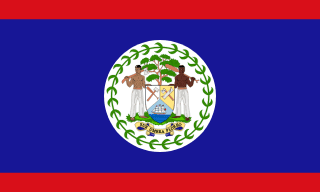Belize - Introduction
Belize (officially: Belize) is a country in Americas, precisely in Central America, with a population of about 421.3 Thousands inhabitants today (2025-04-23). The capital city of Belize is Belmopan, and the official country TLD code is .bz. Belize has cca2, cca3, cioc, ccn3 codes as BZ, BLZ, BIZ, 084 respectively. Check some other vital information below.

Belize , Coat of Arms
Names
| Common | Belize |
|---|---|
| Official | Belize |
| Common (Native) | Belize |
| Official (Native) | Belize |
| Alternative spellings | BZ |
| Translations ⬇️ | |
Languages
| bjz | Belizean Creole |
|---|---|
| eng | English |
| spa | Spanish |
Geography

Belize is located in Central America and has a total land area of 22966 km². It is bounded by Guatemala, Mexico and the capital city is Belmopan
| Region/Continent | North America |
|---|---|
| Subregion | Central America |
| TimeZone | UTC-06:00 |
| Capital city | Belmopan |
| Area | 22966 km² |
| Population 2025-04-23 | 421.3 Thousands |
| Bordered Countreies | Guatemala, Mexico |
| Demonym | |
| eng | Male: Belizean / Female: Belizean |
| fra | Male: Bélizien / Female: Bélizienne |
| Lat/Lng | 17.25, -88.75 |
Historical data and more

The National Flag of Belize
The flag of Belize has a royal blue field with a thin red horizontal band at the top and bottom of the field and the national coat of arms in the center.
History section not found.
| Currency | |
|---|---|
| Name | Belize dollar |
| Code | BZD |
| Symbol | $ |
| Other info | |
| Idependent | yes, officially-assigned |
| UN Member country | yes |
| Start of Week | monday |
| Car Side | right |
| Codes | |
| ISO 3166-1 alpha-2 | BZ |
| ISO 3166-1 alpha-3 | BLZ |
| ISO 3166-1 numeric | 084 |
| International calling code | +501 |
| FIFA 3 Letter Code | BLZ |
All Important Facts about Belize
Want to know more about Belize? Check all different factbooks for Belize below.

